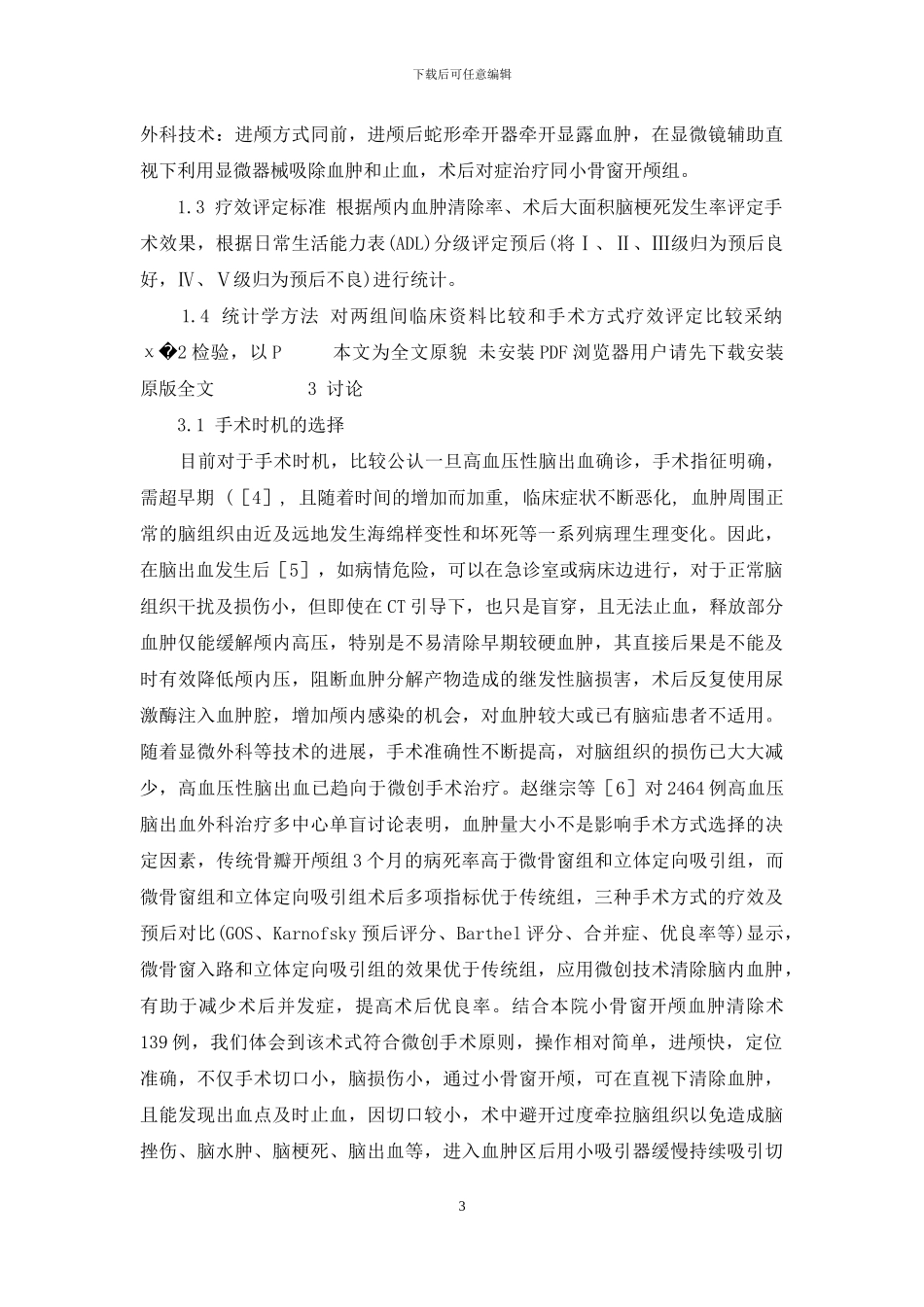下载后可任意编辑296 例高血压性脑出血显微外科微创治疗分析 高血压脑出血微创术后多久过安全斯296 例高血压性脑出血显微外科微创治疗分析 高血压脑出血微创术后多久过安全斯 【摘要】 目的 探讨高血压性脑出血患者采纳显微外科联合小骨窗微创治疗后的效果,指导临床术式选择。 方法 回顾性分析单纯小骨窗手术 139 例,显微外科联合小骨窗微创手术 157 例,根据颅内血肿清除率、术后大面积脑梗死发生率评定手术效果,根据日常生活能力表(ADL)分级评定预后进行统计分析。结果 术后血肿残留、术后大面积脑梗死发生率和预后分级有统计学差异,显微外科联合小骨窗组各项指标优于单纯小骨窗手术组。结论 显微外科联合小骨窗微创手术治疗高血压性脑出血,能提供良好的照明和视野,并且提高病变的放大视觉效果,能够直视下清除血肿,提高血肿清除率,减少了术后大面积脑梗死的发生,有利于改善患者预后。 【关键词】 颅内出血;微创神经外科;微骨窗入路 Therapeutic effect of microsurgical technique with Key-hole approach for 296 cases of hypertensive intracranial hemorrhage WANG Tong-tong,ZHENG De-qun. Department of Brain surgery,Suzhou city Hospital in Anhui Province,Suzhou xxxx,China 【Abstract】 Objective To investigate the microsurgical technique with Key-hole approach for hypertensive intracranial hemorrhage. Methods 139 patients were operated only with Key-hole approach and 157 patients were operated with Key-hole approach with microsurgical technique, respectively. The clearance percentage, incidence rate of 1下载后可任意编辑mass area infarction, score of ADL were retrospectively analyzed and compared between two groups. Results The clearance percentage and incidence rate of mass area infarction in group with Key-hole approach with microsurgical technique were significantly lower than those in group only with Key-hole approach (15.8%vs 7.6%,8.6%vs 3.2%,both P[1]的讨论表明早期手术治疗和保守治疗对于预后无明显差异,尤其对于深部血肿和脑干血肿,外科手术效果不佳,但是仍有大多数讨论表明,高血压性脑出血外科...


